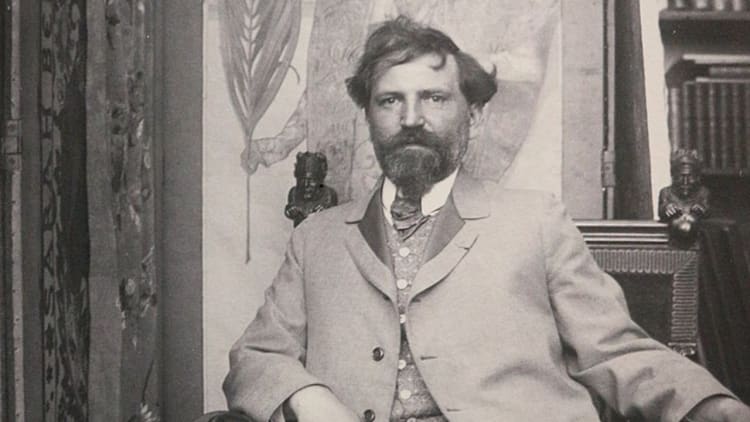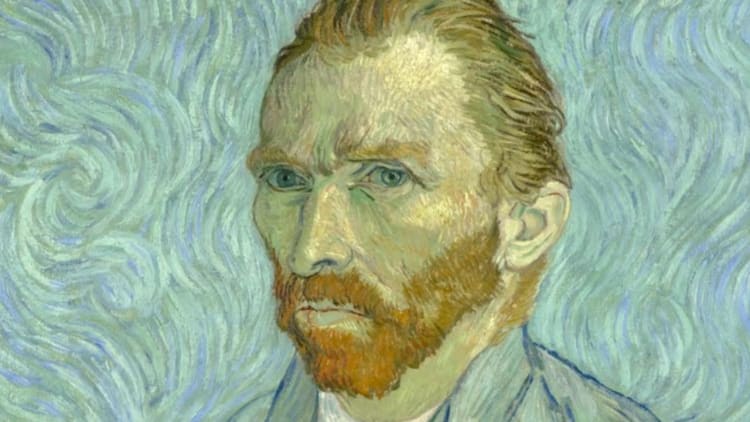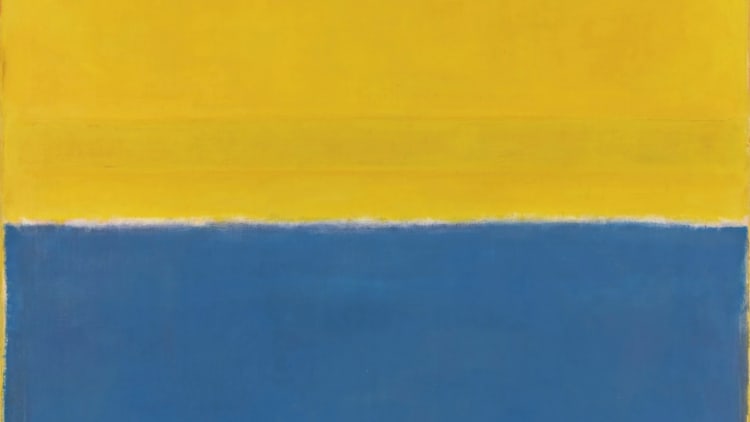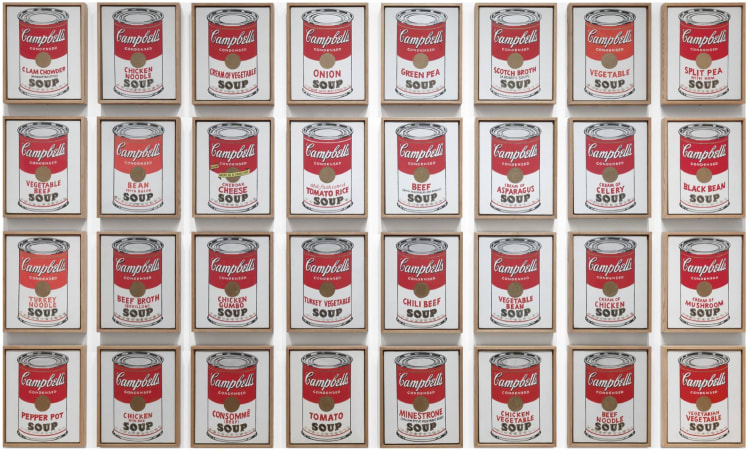Much more than a genius illustrator, the Czech Alphonse Mucha became the figurehead of Art Nouveau and is one of the emblematic artists of the Belle Époque.
His seductive art is somewhere between poster art and illustration, he is still very successful and is the pride of the Czech Republic and the Slavic people.
Let's discover 8 things to know about Alphonse Mucha who can also be spelled "Alphons Mucha" or "Alfons Mucha".

1 - He was born in Moravia
Alphonse Mucha was born on July 24, 1860 in Eibenschütz in the south of Moravia in the present Czech Republic.
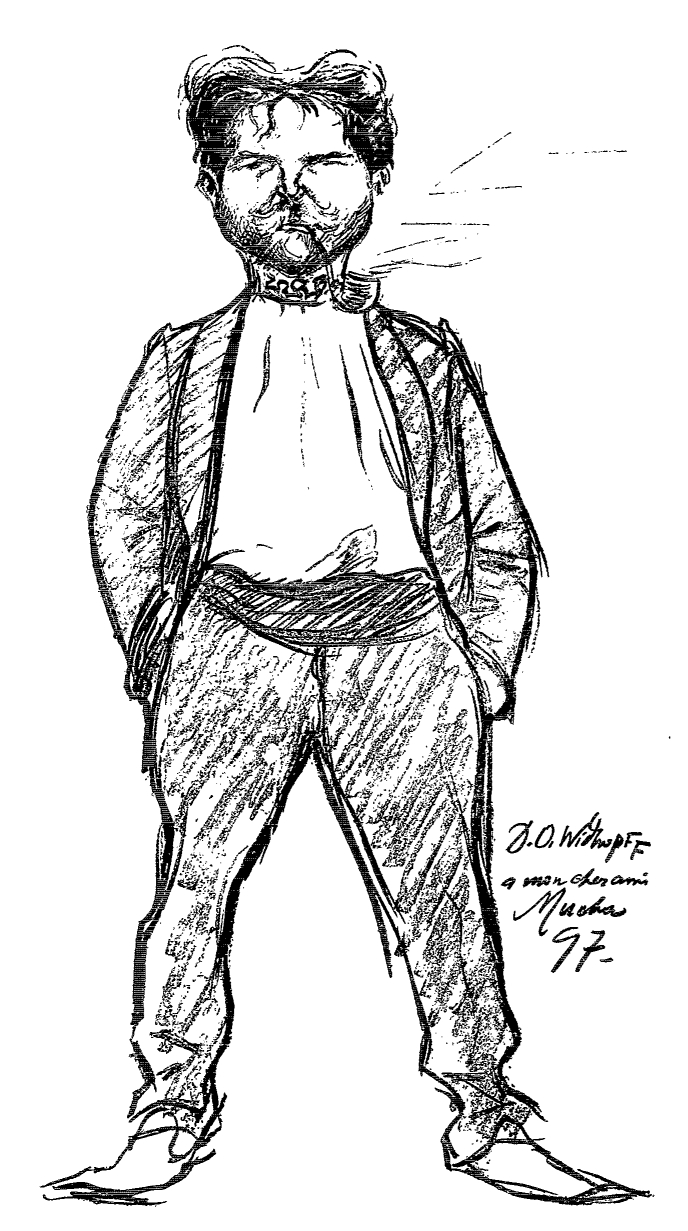
Portrait of Alfons Mucha, David Ossipovitch Widhopff, published in La Plume in 1897
He was the second child of Ondrej Mucha, a bailiff and stranger to the artistic world. Young Alphonse's singing talents allowed him to continue his education in the Moravian capital, Brno.
2 - He had a failure and was able to bounce back
In 1878, he applied to the Academy of Fine Arts in Prague and was rejected with the following answer: "Choose another profession where you will be more useful."
After some decorative work for Moravian theaters, he emigrated to Vienna in 1879 to work for the most important theater set company in the Austrian capital, all the while continuing his artistic training as a student of Hans Makart.
3 - In 1887, he moved to Paris
Together with his friend Karel Vítězslav Mašek, Alphonse Mucha decided to move to Paris to continue his studies at the Académie Julian and the Académie Colarossi, he was helped by Count Khuen-Belasi, who provided financial support.

Advertising poster F. Champenois Imprimeur-Éditeur, Alphonse Mucha, 1897
In Paris, he met Paul Sérusier and produced advertising posters and illustrated calendars, catalogs and books.
In 1889, the sponsorship of Count Eduard Khuen-Belasi ended, he left the Académie Colarossi and was hired by the Parisian publishing house Armand Colin.
4 - It took him a week to create a work that changed his life
On December 24, 1894, the great tragedienne Sarah Bernhardt urgently ordered a poster for her last play, Gismonda, which was performed at the théâtre de la Renaissance which she directed.

Sarah Bernhardt as Gismonda, Alphonse Mucha, 1894
The poster requested by the actress then at the top of her career was composed by Alphonse Mucha who succeeded in completing it in only one week, on the morning of January 1, 1895, the poster was posted throughout Paris.
Sarah Bernhardt was so seduced by Mucha's style that she hired him for six years. His posters were so successful that they quickly became collector's items.
5 - Alphonse Mucha used photography for his illustrations
As soon as he arrived in Paris, Mucha began to photograph models to build up a catalog of images.
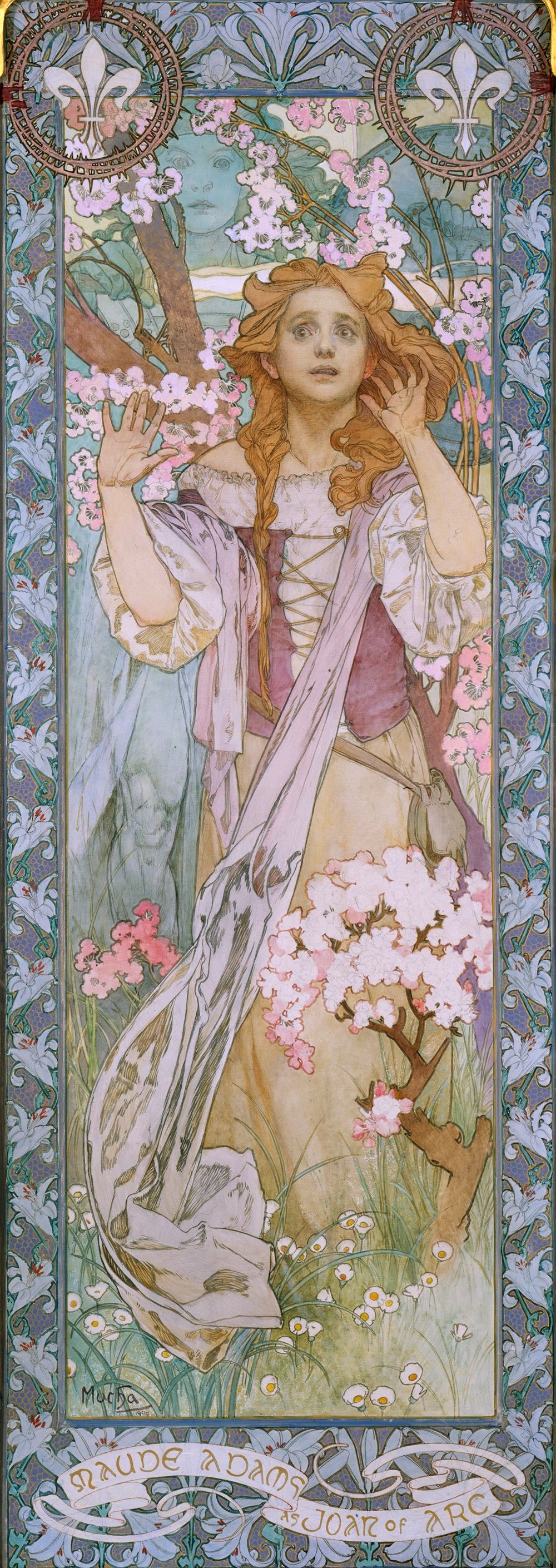
Poster showing Maude Adams as Joan of Arc in Schiller's The Maid of Orleans, Alphonse Mucha, 1909
He used these images to create his illustrations and sometimes even used photos taken years earlier.
"I was happy to have committed myself to an art intended for the people and not for closed salons." Alphonse Mucha
6 - He won a silver medal at the 1900 World's Fair
Mucha's style characterized by organic lines, sinuous shapes and pastel tones became very popular and embodied the Art Nouveau movement.
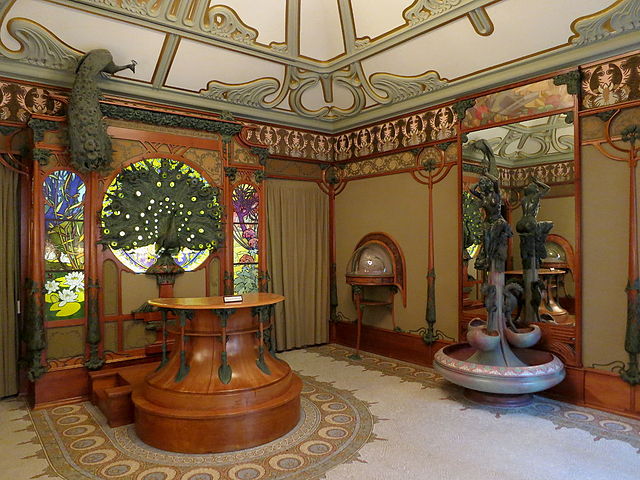
Georges Fouquet's store formerly located at 6, rue Royale in Paris. Reconstituted in the Carnavalet Museum © O.Taris
The jeweler and goldsmith Georges Fouquet asked him to design a collection of jewelry for his booth at the 1900 Paris World's Fair.
Alphonse Mucha's earrings, necklaces, rings and brooches won him a silver medal.
7 - Alphonse Mucha was a Freemason
Raised in the Catholic religion, Alphonse Mucha was always interested in religion and spirituality.
On January 25, 1898 he entered the Parisian lodge of the Grand Orient de France. Mucha saw Freemasonry as an extension of his spiritualism.
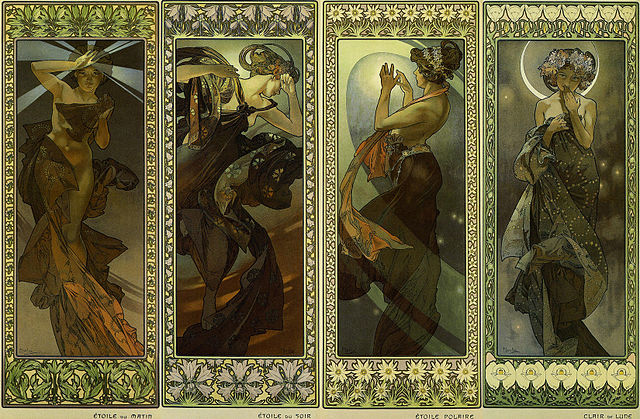
The moon and the stars, Alphonse Mucha, 1902
His spiritual path even led him to make three virtues: Truth, Love and Beauty his "cornerstones of the human condition". He therefore strove to spread these values through his art, wishing to contribute to the progress of humanity.
8 - He was interrogated by the Gestapo
After a passage through the United States, Mucha left Parisian life to return to Prague.
In the 1930's, Europe was struck by the rise of the Nazi regime in Germany, Mucha quickly became a target, the Nazis considered him a decadent artist, with Judeophile and Freemason tendencies.
On March 15, 1939, the German troops make their entry in Prague, Alphonse Mucha is arrested and questioned by the Gestapo, he is released because of his fragile health. He died of pneumonia on July 14, 1939.

